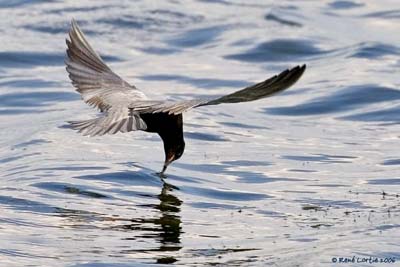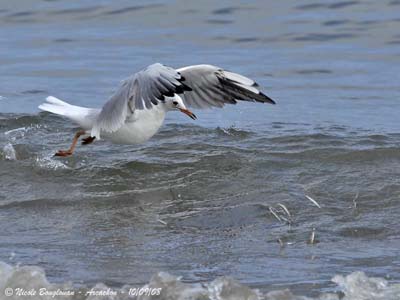
LARIDAE
Gulls, terns, noddies and skimmers
SUMMARY OF THIS STUDY
Introduction and Description of the species
Reproduction :
The nest
The defence displays
The courtship displays
Nesting behaviour
Text by Nicole Bouglouan
Photographers:
Marc Chrétien
MURINUS
Alfredo Colón
Puerto Rico Wildlife
Maxime Dechelle
LEPAPARRAZO
Patrick Ingremeau
TAMANDUA
Tom Grey
Tom Grey's Bird Pictures
René Lortie
http://rlortie.ca
Nicole Bouglouan
PHOTOGRAPHIC RAMBLE
Sources :
HANDBOOK OF THE BIRDS OF THE WORLD Volume 3 by Josep del Hoyo-Andrew Elliott-Jordi Sargatal - Lynx Edicions - ISBN : 8487334202
THE HANDBOOK OF BIRD IDENTIFICATION FOR EUROPE AND THE WESTERN PALEARCTIC by Mark Beaman, Steve Madge - C.Helm - ISBN: 0713639601
OISEAUX DE LA REUNION par Armand Barau - Nicolas Barré - Christian Jouanin - Editions Orphie - ISBN : 2877632636
L’ENCYCLOPEDIE MONDIALE DES OISEAUX - Dr Christopher M. Perrins - BORDAS - ISBN: 2040185607
DIFFERENT FEEDING BEHAVIOURS:
Gulls are opportunistic and omnivorous, taking living, sick or dead aquatic preys from several seacoast areas according to the tide movements. They also take terrestrial preys such as arthropods, rodents, eggs and nestlings of other birds’ species, amphibians and reptiles.

During the breeding season, gulls feed on seeds, fruits, insects, earthworms and small mammals. These birds also scavenge for offal, carrion and refuse, and can be aggressive predators and pirates.
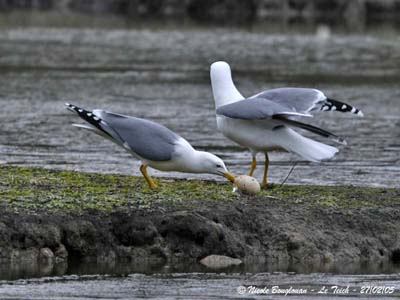
Gulls use several methods for feeding. They catch insects in the air, flying in circles over water or wet areas.
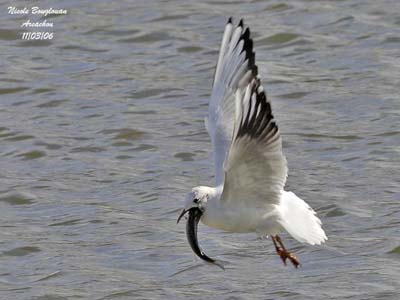
They also pluck items from the surface of water or land, or perform plunge-diving. They swim and dip into the water to snare the preys.
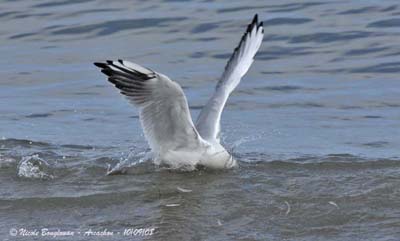
They also engage in foot-paddle in shallow water.
The smaller gulls are more agile in flight than the larger species, and perform hover-dipping over schools of fish.
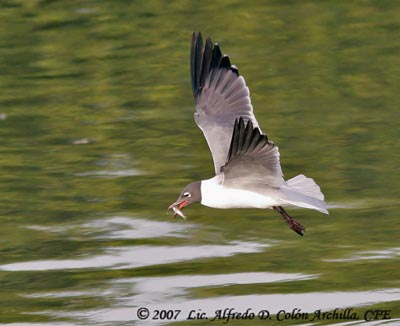
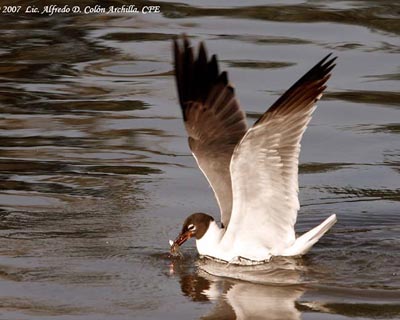
Gulls also hunt on the ground by walking and picking up live preys, or carrion along the shores. They sometimes dig into the sand for crabs.

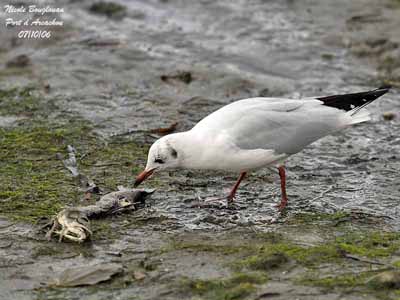
They use a peculiar method, by dropping of hard-shelled items such as clams or mussels onto rocky surfaces to break them open.
Some species frequently engage in piracy after an aerial chase, or steal the food from other adult feeding the chicks.
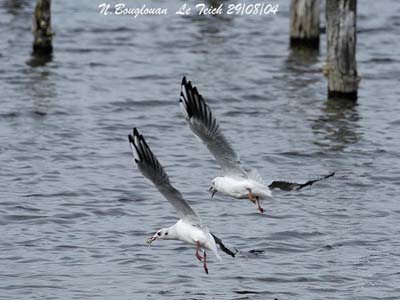
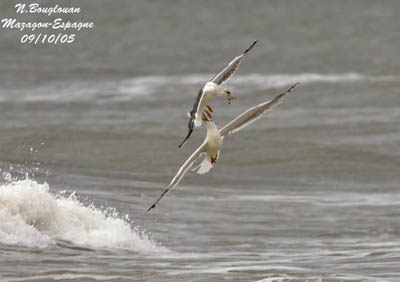
Gulls follow the fishing-boats and obtain offal, but also fish during the processing operations. They are able to exploit a wide variety of food types, and have developed diversified foraging methods.
Terns are more specialized foragers than gulls. They usually feed in aquatic habitats, either freshwater, estuarines or marine.
They feed on insects caught over wet areas and coastal marshes, and open or sparsely vegetated water. They also take small fish at shoals.
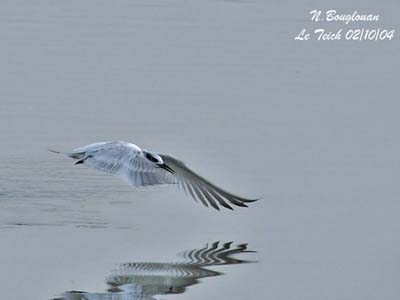
Thalasseus sandvicensis
They may fish in sheltered bays, but usually forage from tidal areas to ocean waters close to the shore, but also across the continental shelf.
Some species may travel long distance over the ocean for food. Terns use their agility in flight for feeding, and most of them are able to perform several methods such as contact-dipping, aerial-dipping, hover-dipping, surface-dipping, but also aerial hawking for flying insects and piracy.
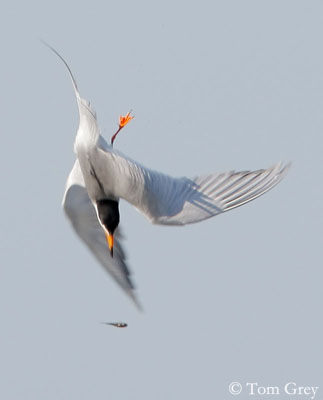
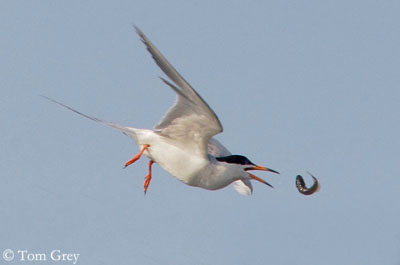
Forster's Tern - Sterna forsteri
However, some species such as the beautiful Sooty Tern (Onychoprion fuscatus) do not perform plunge-diving.
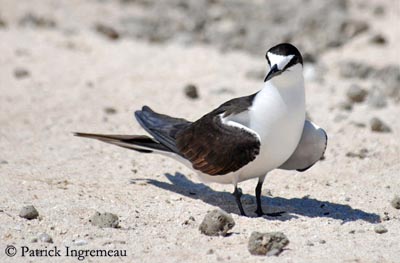
Sooty Tern - Onychoprion fuscatus
During the plunge-diving, the terns usually submerge completely. They can sometimes pursue the prey briefly under water. But the most usual method is to pick up the fish with the bill when submerged, and immediately leave the water and rise up into the air.
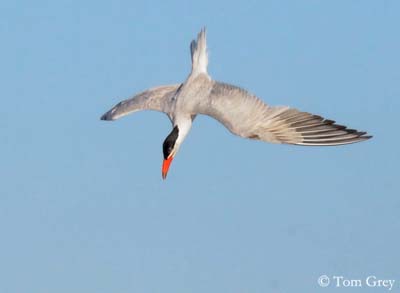
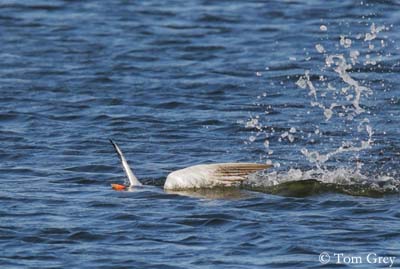
Terns perform piracy at breeding colonies, and steal the preys from adults feeding their young. They also follow the fishing-boats as the gulls.
All these foraging methods involve grace and agility in flight. They offer several aesthetic coastal spectacles with their graceful swooping flights and their aerobatics over the waves.
Noddies’ foraging behaviour is close to that of terns.
They use hover-dipping and contact-dipping, but usually they do not plunge-dive. They feed on fish and squid, and are able to catch flying-fish in the air.
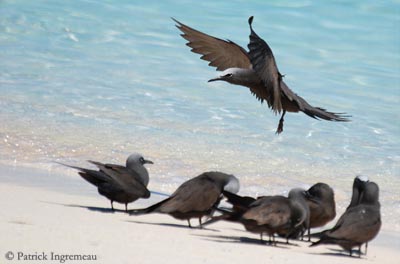
Anous stolidus
Skimmers have peculiar feeding behaviour due to their stunning bill.
Their foraging method is unique among birds.
The bird flies along and “ploughs” the water with the long lower mandible. The bird skims an area of about 50-100 metres before flying up. Then, it turns and skims the same area again.
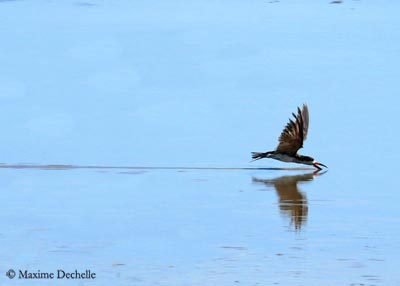
Rynchops niger
This method requires high densities of fish and shrimps, and is used in shallow water, or near the surface in deeper area.
Skimmers feed almost exclusively on fish, and shrimps are taken too in some regions of SE and Gulf coasts of North America. Preys are usually 4-12 cm in length, sometimes up to 20 cm long. The fish is held crosswise in the bill, and swallowed in flight or after landing.

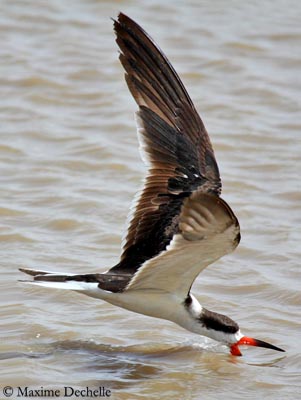
Skimmers are crepuscular and nocturnal feeders. Some species of fish come close to the surface, making easy to catch them.
Skimmers are perfectly adapted to this feeding behaviour. Young learn it while they accompany their parents, but the chicks instinctively attempt to skim the sand of dunes and beaches! They also learn to skim only in water with adults.
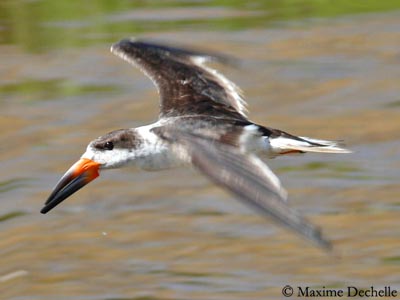
Skimming is more tactile than visual, and skimmers are known to feed mainly at dusk and even at night.
The show is worth seeing!
Larus michahellis
Chroicocephalus ridibundus
Chroicocephalus ridibundus
Chroicocephalus ridibundus
